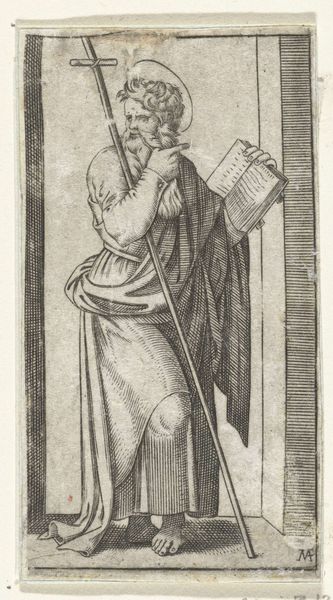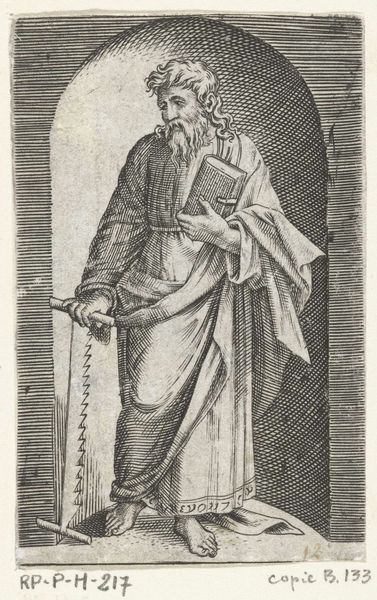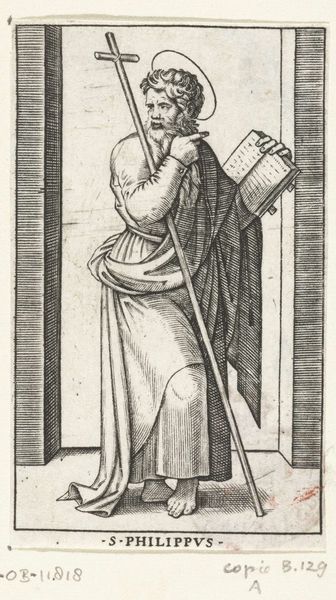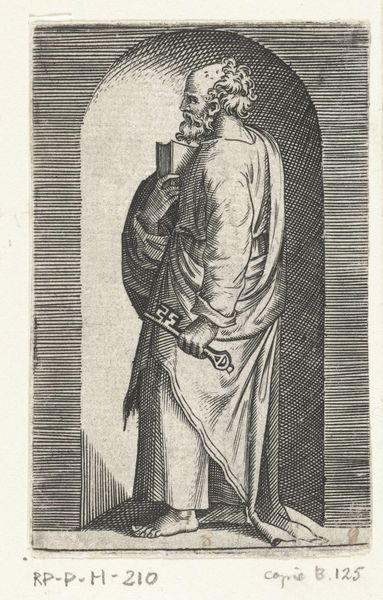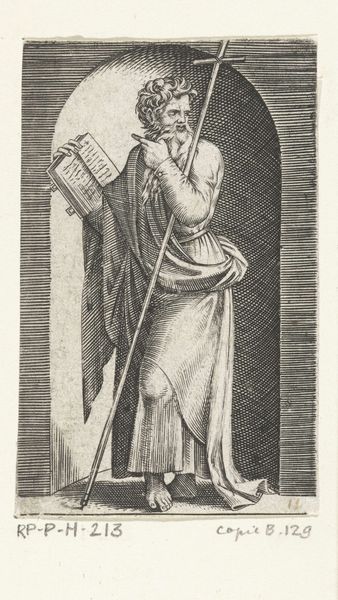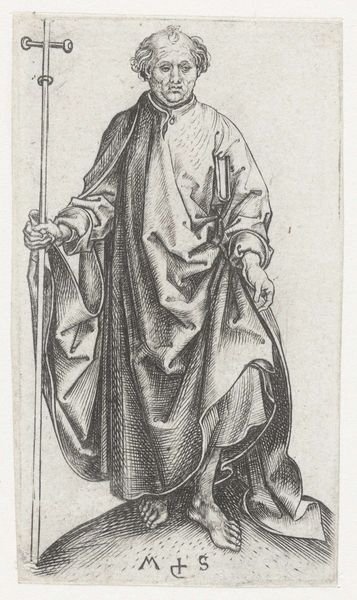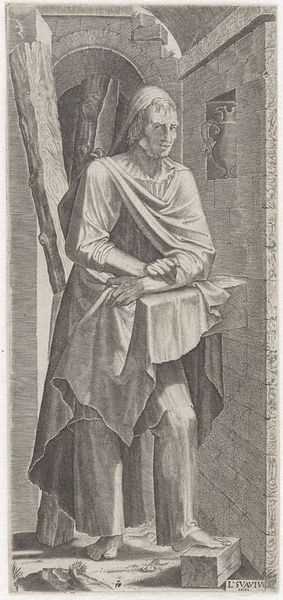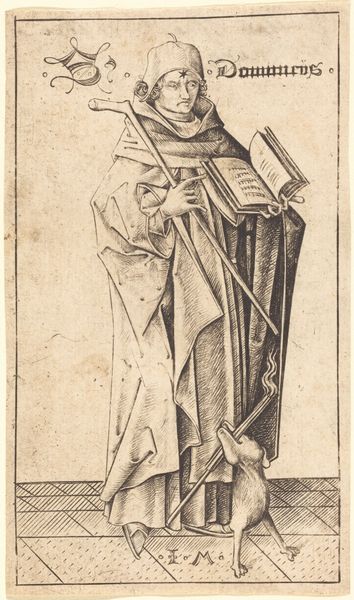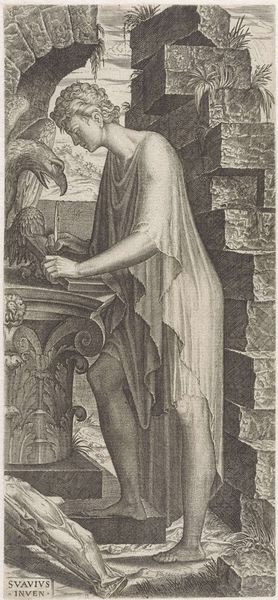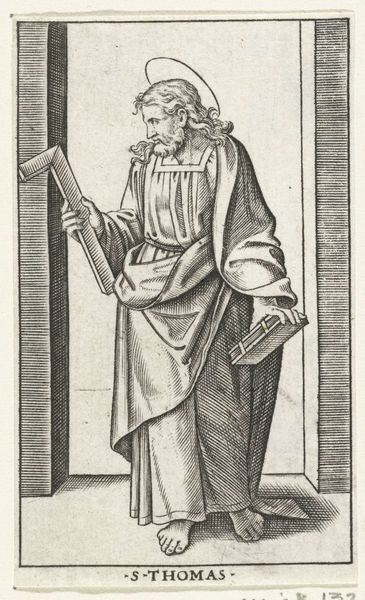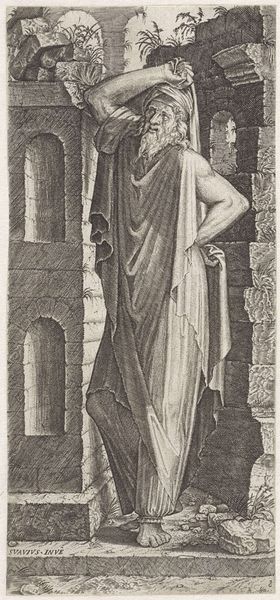
print, engraving
#
portrait
# print
#
old engraving style
#
figuration
#
italian-renaissance
#
engraving
Dimensions: height 195 mm, width 89 mm
Copyright: Rijks Museum: Open Domain
Curator: Here we have Lambertus Suavius's "Apostel Judas Thaddäus", an engraving dating back to 1545. What are your initial thoughts? Editor: Well, the somber monochrome creates a rather introspective mood, don't you think? It feels quite monumental despite being a print—almost sculptural with its play of light and shadow. Curator: Absolutely. Notice how Suavius uses hatching and cross-hatching to define form and texture. The Apostle's drapery, for instance, flows beautifully, and the architectural backdrop—though simple—provides a compelling framework. Editor: That backdrop intrigues me. It appears unfinished, almost crumbling. I wonder if that ruinous state speaks to the vulnerability of faith, or perhaps the artist is suggesting the decaying state of established institutions. What does Saint Jude Thaddeus symbolize here, within this unstable construction? Curator: An astute observation. However, let's not overlook the geometric figure in Jude's hands: a set square. Symbolically, that links him with architecture and building—implying structural strength and rectitude. The classical architecture behind him, whether complete or incomplete, forms a setting that places him within the continuity of a larger historical narrative. Editor: I see your point about the set square and his relationship to architecture, but even within the context of religious iconography, isn't there also room to consider the challenges faced by early Christian communities in maintaining structural integrity when constantly undermined by the political and ideological conflicts that are echoed in this architectural state of disrepair? Curator: It's a testament to Suavius's skill that his work continues to evoke nuanced readings centuries later. We can appreciate both the aesthetic qualities of the engraving and consider how history shaped its making and informs our present interpretation. Editor: Indeed, this exploration leaves one thinking deeply about the relationship between personal integrity, collective structures, and faith itself.
Comments
No comments
Be the first to comment and join the conversation on the ultimate creative platform.
